
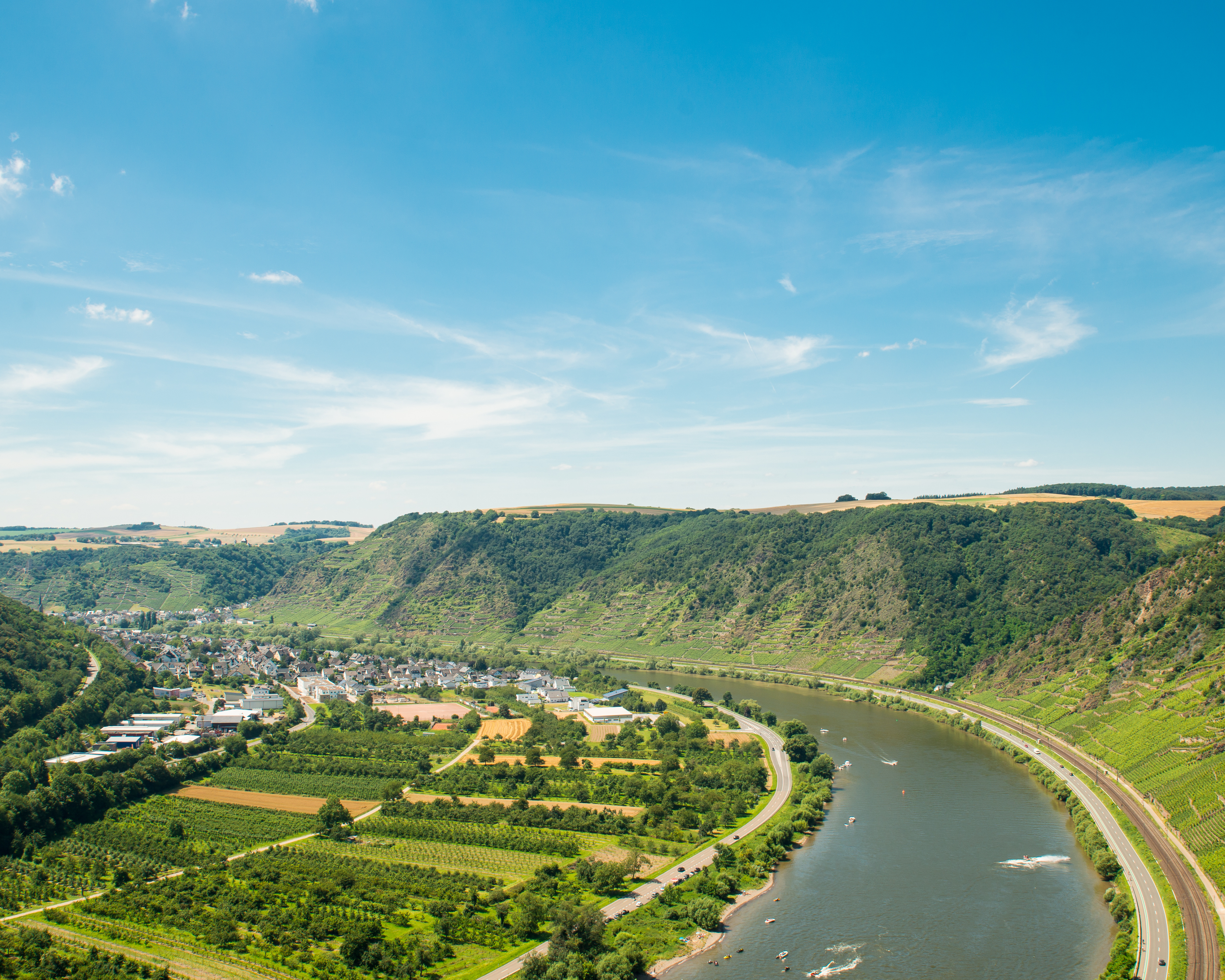
Germany’s Wine Regions
Discover Germany’s cool-climate wines, from elegant Rieslings to rich Pinot Noirs, shaped by centuries of craftsmanship.
Riesling is not just a wine; it’s an experience.
– Anonymous
Germany’s Legacy in Cool-Climate Winemaking
Germany is renowned for its cool-climate wines, particularly its world-class Rieslings. The country’s diverse terroirs and meticulous craftsmanship have earned it a reputation as one of the most innovative wine producers globally. German wines are prized for their elegance, complexity, and versatility, offering styles ranging from bone-dry to lusciously sweet. Alongside Riesling, Germany is also celebrated for its Spätburgunder (Pinot Noir) and unique wine classification system, which emphasizes quality and ripeness.
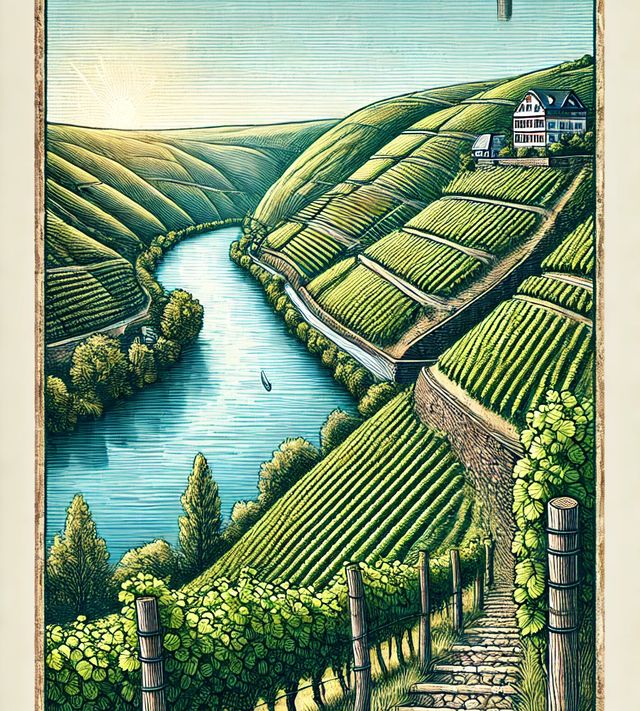
Elegant Rieslings from the Mosel
Mosel: Germany’s Riesling Heartland
Renowned for its elegant, mineral-driven Rieslings grown on steep, terraced vineyards along the Mosel River.
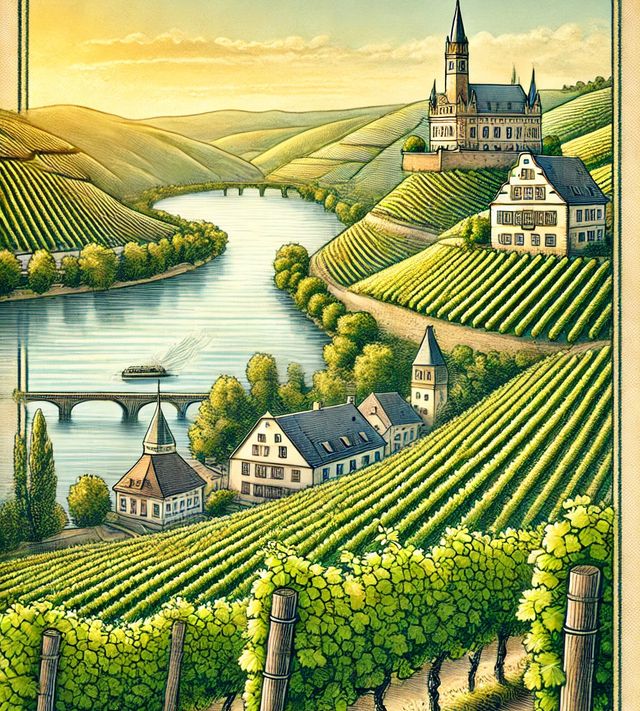
Rheingau’s Finest Rieslings
Rheingau: Excellence in Dry and Sweet Rieslings
A prestigious region producing high-quality Rieslings and a growing focus on Spätburgunder.

Innovative Wines from Pfalz
Pfalz: A Rising Star in German Wines
Germany’s second-largest wine region, known for dry Rieslings and experimenting with international varieties.

Refreshing Whites from Rheinhessen
Rheinhessen: Tradition Meets Innovation
Germany’s largest wine region, offering refreshing whites and dynamic winemaking styles.
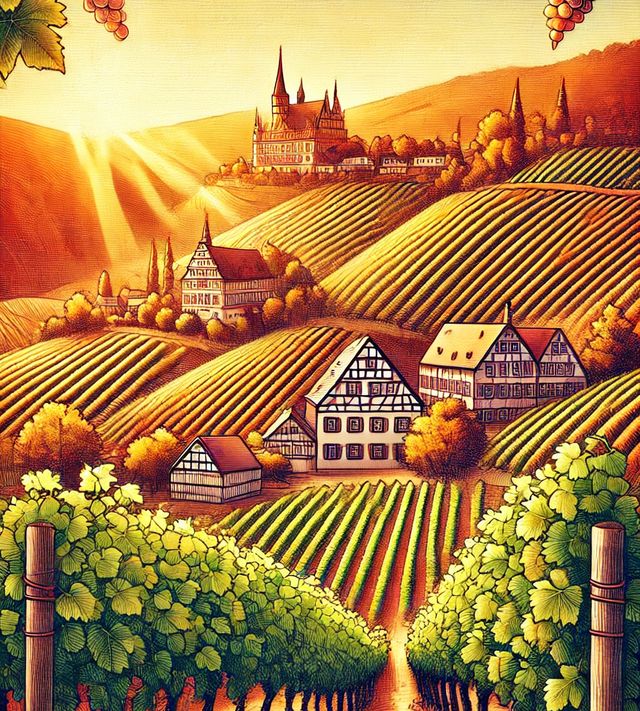
Elegant Pinots from Baden
Baden: Germany’s Pinot Paradise
The country’s warmest wine region, specializing in Spätburgunder and Burgunder varieties.
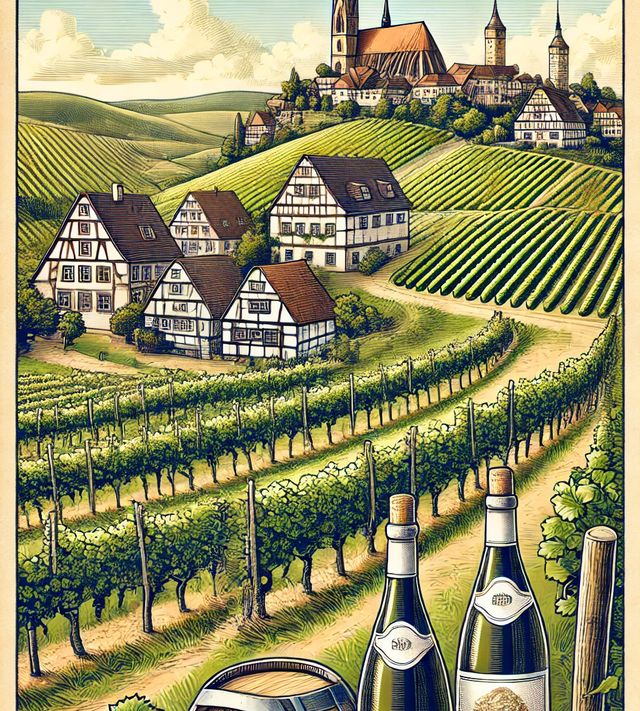
Unique Whites from Franken
Franken: The Land of Silvaner and Bocksbeutel
Known for its dry whites, particularly Silvaner, and its distinctive bottle shapes.
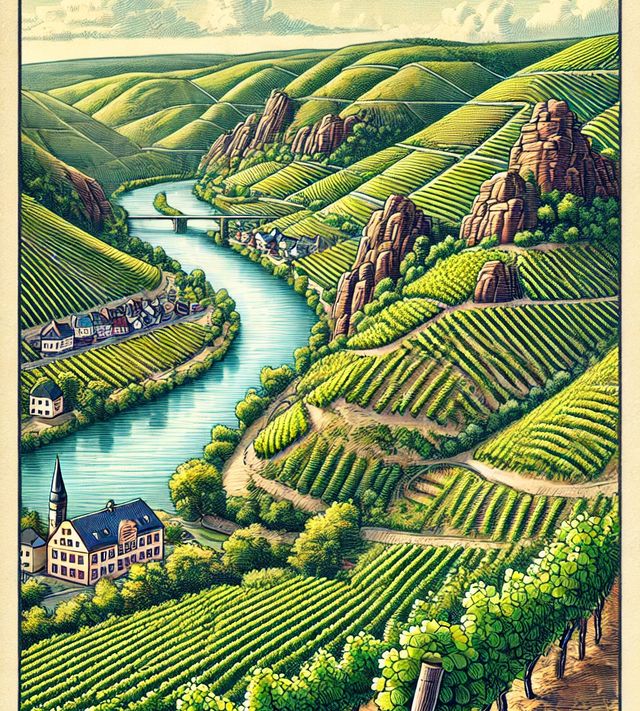
Hidden Gems from Nahe
Nahe: Germany’s Hidden Riesling Gem
A smaller region producing high-quality Rieslings with distinctive minerality.
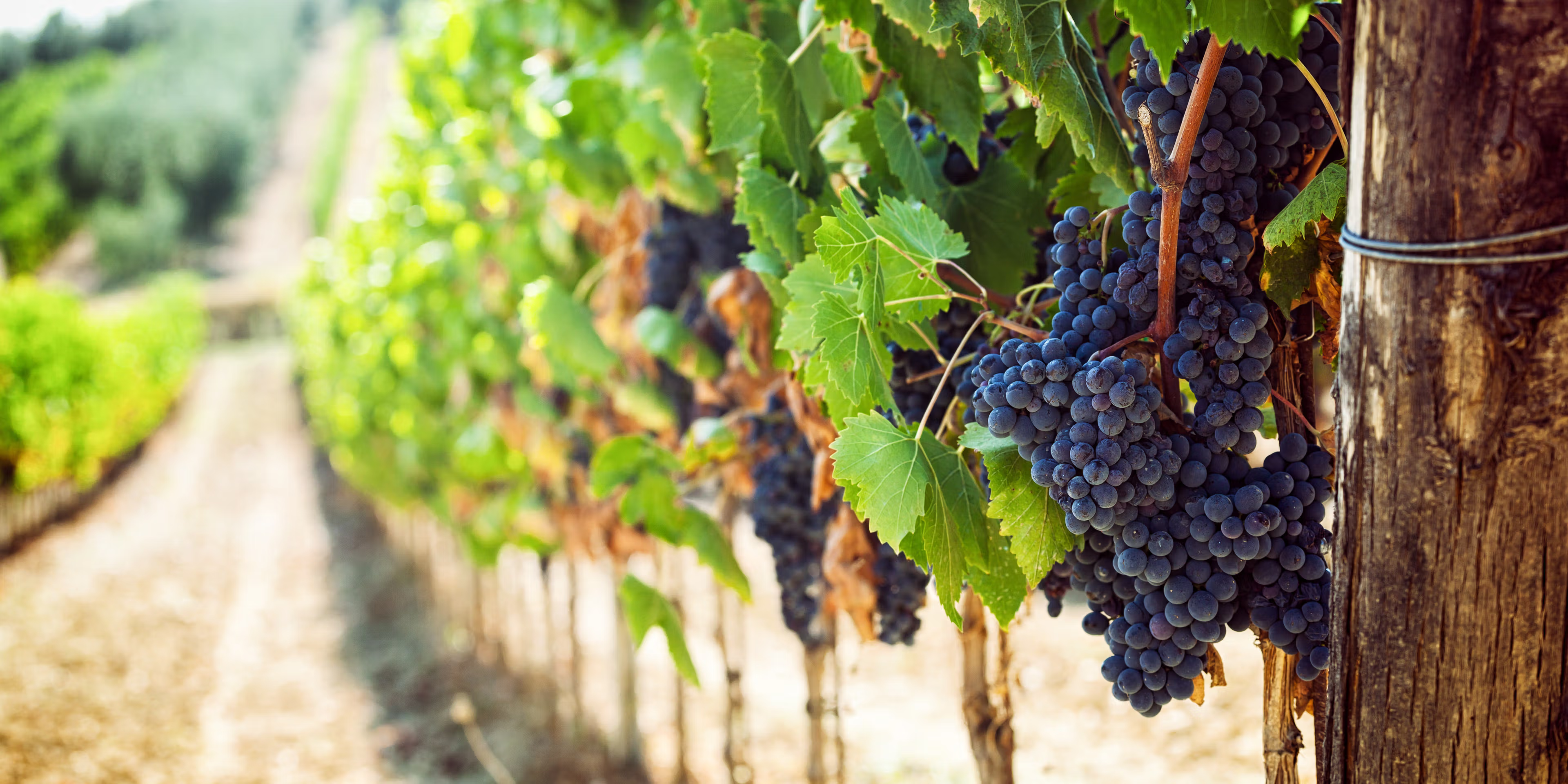
Grape Varieties That Define German Wine
Riesling, Pinot Noir, and Beyond
Germany’s vineyards are home to a remarkable variety of grapes, each contributing to its diverse wine offerings.
Riesling: Known for its vibrant acidity, aromatic complexity, and ability to express terroir, Riesling is Germany’s flagship grape.
Spätburgunder (Pinot Noir): The country’s cool climate produces elegant and refined red wines with flavors of cherry, earth, and spice.
Silvaner: A lesser-known variety that thrives in Franken, producing minerally, dry whites.
Müller-Thurgau: An easy-drinking white wine, popular for its light and fruity profile.

Understanding the System
Germany’s Wine Classification and Ripeness Levels
Germany’s wine classification system is built on quality and ripeness, offering a clear guide to consumers:
Qualitätswein (QbA): High-quality wines from one of Germany’s 13 wine regions.
Prädikatswein: Wines with six levels of ripeness, including:
Kabinett: Light, fresh wines with lower alcohol.
Spätlese: Late-harvest wines with richer flavors.
Auslese: Selectively handpicked grapes, often sweet.
Beerenauslese (BA): Intensely sweet wines from botrytized grapes.
Trockenbeerenauslese (TBA): Extremely sweet and rare dessert wines.
Eiswein: Made from grapes frozen on the vine, offering concentrated sweetness and acidity.
VDP (Verband Deutscher Prädikatsweingüter): A private association emphasizing terroir and high standards.
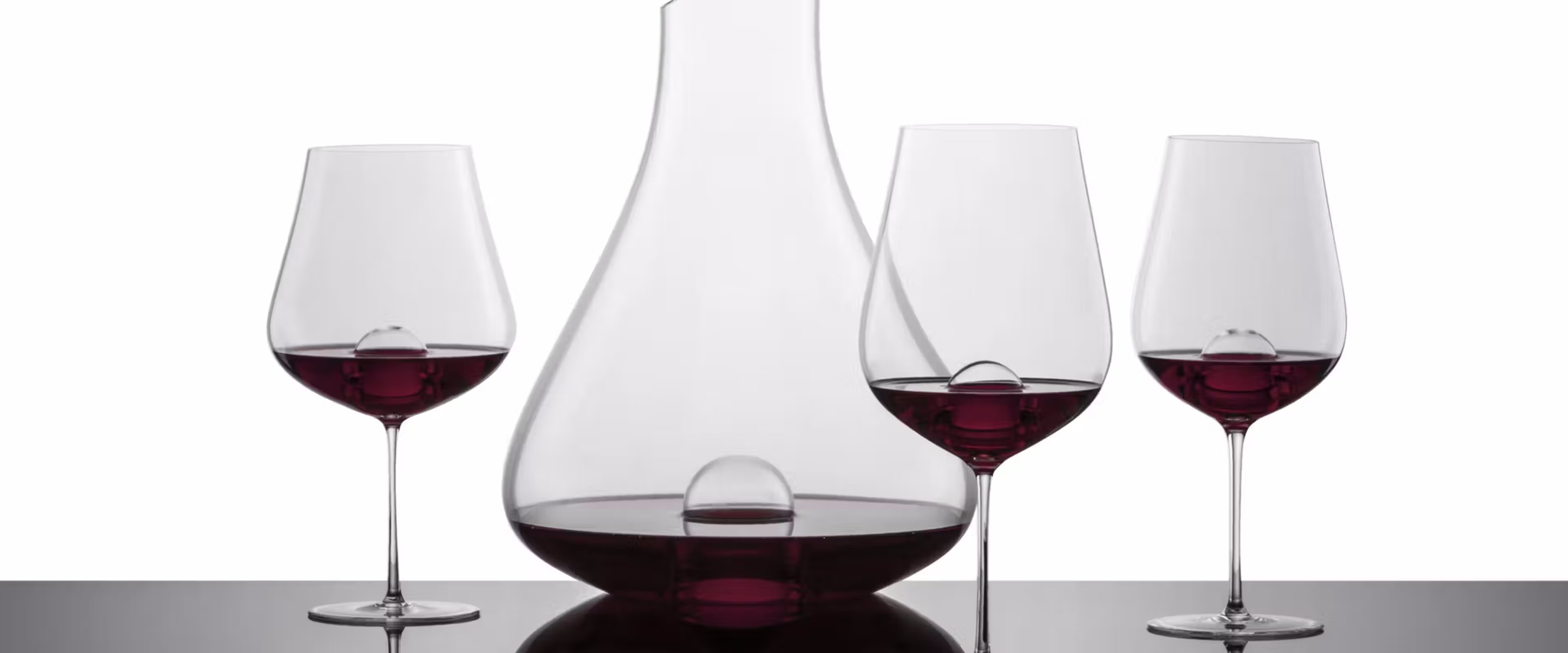
Perfecting Your Wine Rituals
Don’t Uncork Too Early!
Patience is key when enjoying fine wine. This guide explains why uncorking your wine too soon can impact its aroma and flavor, with tips for properly timing your wine experience. German wines like Riesling and Spätburgunder are particularly rewarding when given time to breathe.
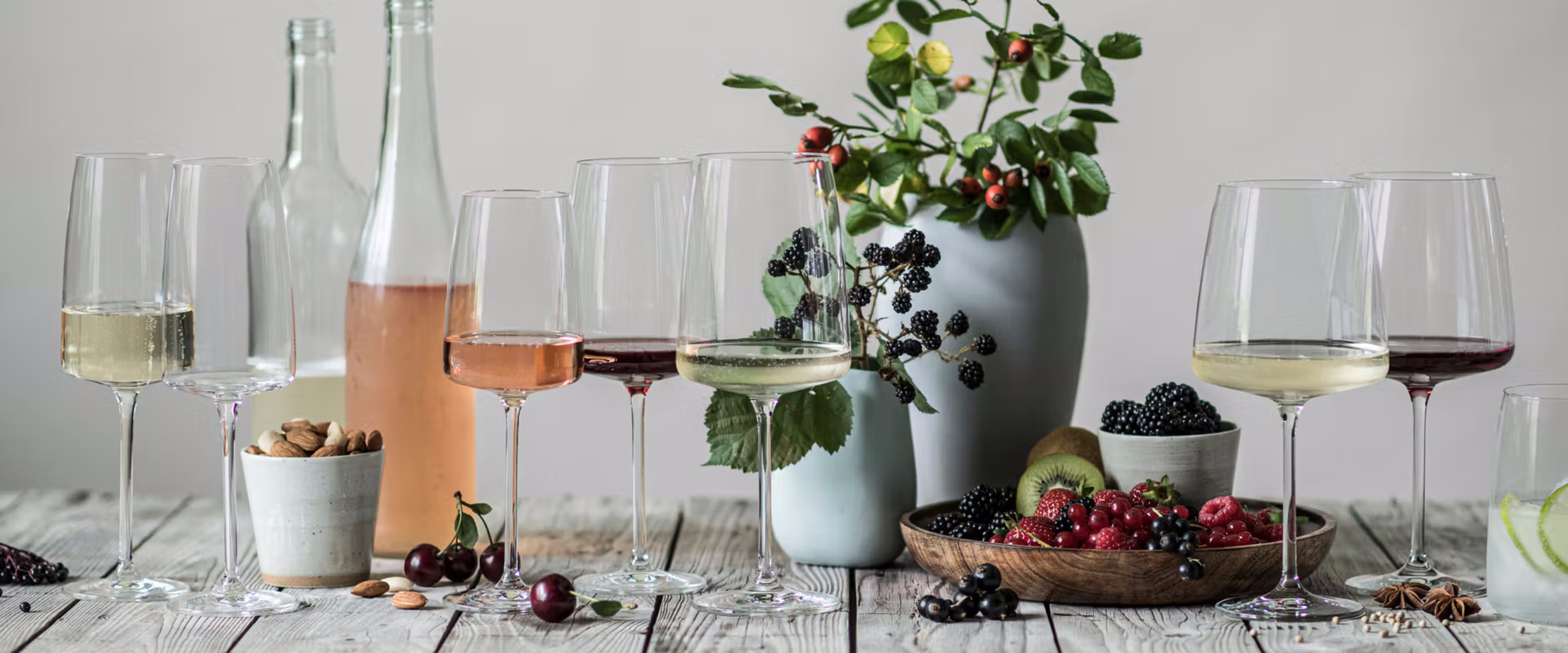
Enhance Your Wine Experience
The Right Glass for Your Wine
The right glassware can elevate your wine experience, especially with aromatic varieties like Riesling or complex reds like Spätburgunder. Discover how glass shapes influence taste and aroma, and how to choose the perfect glasses for your collection.
Explore the Diversity and Elegance of German Wines
German wines represent a harmonious blend of tradition, precision, and innovation. Known for their world-class Rieslings, Germany’s winemaking heritage spans centuries, with each region offering a unique expression of terroir. Whether you’re drawn to the mineral-driven Rieslings of Mosel or the refined Spätburgunders (Pinot Noir) of Baden, German wines deliver a balance of elegance, complexity, and versatility.
Germany’s cool-climate vineyards create wines with vibrant acidity, making them ideal for pairing with a wide range of dishes. From light, dry whites to richly sweet dessert wines, the country’s offerings cater to both casual wine enthusiasts and seasoned collectors.
A Closer Look at Germany’s Wine Regions
Germany’s diverse wine landscape is shaped by its terroirs and microclimates, with 13 official wine regions contributing to its reputation:
- Mosel: Famous for steep, slate-soil vineyards that yield elegant Rieslings with remarkable minerality and aging potential.
- Rheingau: Known for its structured, aromatic Rieslings and increasing focus on Spätburgunder.
- Pfalz: A dynamic region producing dry Rieslings and experimenting with international varieties like Pinot Gris and Chardonnay.
- Rheinhessen: Germany’s largest wine region, balancing innovation with tradition, particularly in its refreshing white wines.
- Baden: The warmest region, specializing in Burgunder varieties, including Grauburgunder (Pinot Gris) and Spätburgunder.
- Franken: Recognized for dry Silvaner wines and the iconic Bocksbeutel bottle shape.
- Nahe: A hidden gem producing Rieslings with distinctive minerality and finesse.
Each region reflects the rich cultural and geographical diversity of Germany, making it a treasure trove for wine lovers.
The Role of German Wine Classifications
Germany’s wine classification system emphasizes quality and clarity, helping consumers navigate its offerings with confidence. The Prädikatswein system, in particular, categorizes wines based on grape ripeness, ranging from light Kabinett to intensely sweet Trockenbeerenauslese and Eiswein. For dry wines, the VDP classification highlights the best vineyard sites, underscoring terroir-driven excellence.
This attention to detail ensures that each bottle delivers on its promise of quality, whether it’s a crisp Riesling or a complex Pinot Noir.
Enhance Your Wine Experience
To fully enjoy German wines, having the right tools and accessories is essential. A Riesling glass enhances the aromas and flavors of this iconic grape, allowing you to savor its full potential. Additionally, explore our collection of German wine art, featuring posters, puzzles, and décor inspired by Germany’s rich viticultural heritage.
Proper storage is also key to preserving the integrity of your wines. Modern metal wine racks offer an elegant solution for showcasing your collection while maintaining functionality. If affordability is a priority, our options for the cheapest storage per bottle ensure quality and cost-effectiveness, perfect for both new and experienced collectors.
Why German Wines Belong in Every Collection
German wines are not only about immediate enjoyment; they are an investment in quality. High-acidity Rieslings and structured Spätburgunders have exceptional aging potential, developing complexity over decades. A well-stored bottle of Kabinett or Spätlese can reveal layers of flavor that evolve beautifully over time.
Whether you’re hosting a dinner party or building a personal cellar, German wines offer unparalleled variety and sophistication. From the lush vineyards of Mosel to the sunny slopes of Baden, each bottle carries a story of tradition and craftsmanship.
Begin Your Journey with German Wines
German wines invite exploration and appreciation, whether you’re drawn to their historical roots or their modern innovations. Pairing the right glass, artful presentation, and proper storage enhances your experience, ensuring that every sip is as rewarding as the winemakers intended. Start your journey today and discover why German wines are celebrated worldwide.